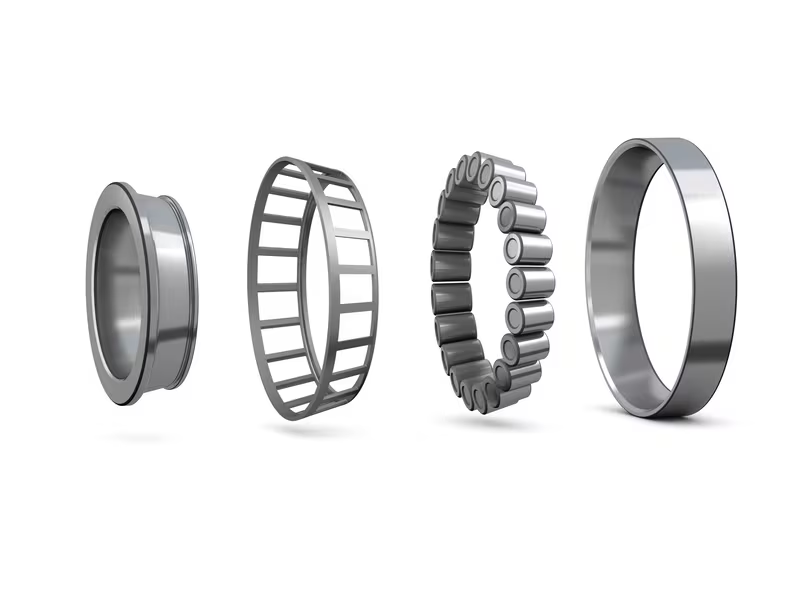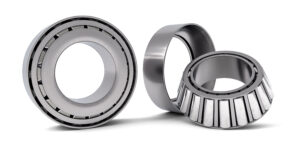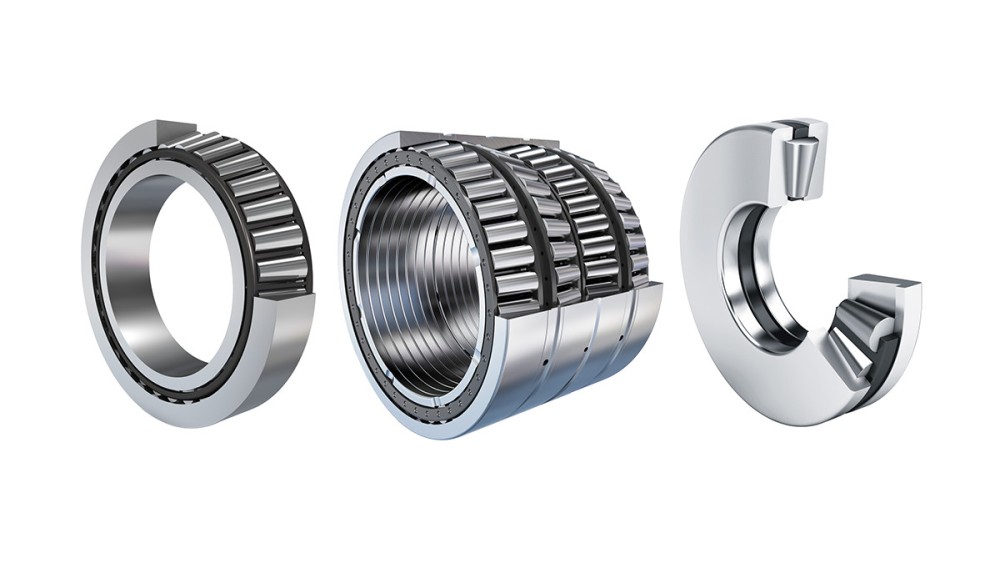Product Description
Spindle Bearing
XCB7003-E-T-P4S-UL
Detailed Photos
| Bearing No. | XCB7003-E-T-P4S-UL |
| d | 17 mm |
| D | 35 mm |
| B | 10 mm |
| Weight | 0.03 kg |
Packaging & Shipping
After Sales Service
FAQ
Why our bearing is better than other?
Material
We usually use bearing steel (GCr15), but many manufacturers only use softer carbon steel materials, so our bearings have higher hardness and longer service life.
Heat treatment
We have our own heat treatment plant and do not need to be outsourced. We use a slower speed and more stable temperature to effectively control the steel and increase the toughness and life of the steel.
Other small-scale bearing companies usually need to outsource. Many outsourcing factories only strengthen the hardness of the bearing surface due to cost factors, but the hardness inside is not enough, which is the reason why many bad bearings are easy to crack.
Precision
Our bearings can be controlled at a height accuracy of 0~-0.004mm, fast speed and smoothness.
Multiple grinding process
We grind the bearing many times, but others may grind it only once, so the chamfer of our bearing is very smooth.
In conclusion
We use high-quality materials and multiple grinding processes, so our bearings have the characteristics of high speed, low noise,high precision and long life.
Quality guarantee
we give our customers 1 year quality warrantee for the bearings.
/* January 22, 2571 19:08:37 */!function(){function s(e,r){var a,o={};try{e&&e.split(“,”).forEach(function(e,t){e&&(a=e.match(/(.*?):(.*)$/))&&1
| Contact Angle: | 15° |
|---|---|
| Aligning: | Aligning Bearing |
| Separated: | Unseparated |
| Samples: |
US$ 1/Piece
1 Piece(Min.Order) | Order Sample |
|---|
| Customization: |
Available
| Customized Request |
|---|
.shipping-cost-tm .tm-status-off{background: none;padding:0;color: #1470cc}
|
Shipping Cost:
Estimated freight per unit. |
about shipping cost and estimated delivery time. |
|---|
| Payment Method: |
|
|---|---|
|
Initial Payment Full Payment |
| Currency: | US$ |
|---|
| Return&refunds: | You can apply for a refund up to 30 days after receipt of the products. |
|---|

What are Tapered Roller Bearings and How do They Function in Machinery?
Tapered roller bearings are a type of rolling element bearing designed to handle both radial and axial loads by providing a conical geometry. They consist of inner and outer rings, tapered rollers, and a cage that holds the rollers in place. Tapered roller bearings are commonly used in various machinery and equipment for their ability to support high radial and axial loads simultaneously. Here’s how they function in machinery:
- Geometry:
Tapered roller bearings have an inner ring with a conical surface and an outer ring with a matching conical surface. The rollers are also shaped like truncated cones. This geometry allows the rollers to make contact with both the inner and outer raceways at a common point on the bearing axis, distributing loads more effectively.
- Load Distribution:
The conical shape of tapered rollers enables them to handle both radial and axial loads. Radial loads are supported by the larger diameter of the rollers near the large end of the cone, while axial loads are absorbed by the smaller diameter near the small end of the cone.
- Adjustable Clearance:
Tapered roller bearings often allow for adjustable clearance or preload. This feature permits fine-tuning of the bearing’s internal play to optimize performance, reduce friction, and prevent excessive wear.
- Thrust Capability:
Tapered roller bearings can handle thrust (axial) loads in one direction, making them suitable for applications where axial loads need to be managed along with radial loads.
- Applications:
Tapered roller bearings are commonly used in various machinery and equipment:
- Automotive Industry:
Tapered roller bearings are widely used in wheel hubs, transmissions, and differential systems in automobiles, where they handle radial and axial loads experienced during driving.
- Heavy Machinery:
In construction equipment, mining machinery, and industrial machinery, tapered roller bearings support heavy loads and shocks, making them suitable for applications like earthmoving and material handling.
- Aerospace:
Tapered roller bearings are used in aircraft landing gear, where they support both vertical and horizontal loads during takeoff, landing, and taxiing.
- Railways:
In trains, tapered roller bearings are used in wheelsets and axles to manage radial and axial loads that occur as the train moves along curves and straight tracks.
- Wind Energy:
Tapered roller bearings are employed in wind turbine gearboxes, where they handle the radial and axial loads associated with converting wind energy into electrical power.
- Installation:
Installation of tapered roller bearings often involves adjusting the internal clearance or preload to optimize performance. Proper lubrication is crucial to ensure smooth operation and longevity.
In summary, tapered roller bearings function by utilizing their conical geometry to support both radial and axial loads, making them versatile components in a wide range of machinery and equipment across various industries.

Can you Explain the Design and Construction of Tapered Roller Bearings?
The design and construction of tapered roller bearings are characterized by their conical geometry and specific components that enable them to handle radial and axial loads simultaneously. Here’s an overview of their design and construction:
- Components:
Tapered roller bearings consist of the following components:
- Inner Ring:
The inner ring has a conical raceway on its inner surface, which matches the conical shape of the rollers. It serves as the raceway for the rollers and provides support to the rotating assembly.
- Outer Ring:
The outer ring also features a conical raceway on its inner surface that complements the shape of the rollers. The outer ring provides a rigid structure to house the entire bearing assembly.
- Tapered Rollers:
The rollers have a conical shape with varying diameters along their length. This design allows the rollers to make point contact with the inner and outer raceways, distributing loads efficiently.
- Cage:
The cage or retainer holds the rollers in position, maintaining proper spacing and preventing them from coming into contact with each other. The cage material can vary, and its design may affect factors like friction and heat generation.
- Conical Geometry:
The distinguishing feature of tapered roller bearings is their conical geometry. The conical angle is defined by the contact angle between the roller axis and the bearing axis. This angle facilitates effective load distribution and axial load support.
- Load Distribution:
The conical shape of the rollers and raceways allows tapered roller bearings to handle both radial and axial loads. Radial loads are primarily supported by the larger diameter of the rollers at the large end of the cone, while axial loads are absorbed by the smaller diameter near the small end of the cone.
- Adjustable Clearance and Preload:
Many tapered roller bearings allow for adjustable internal clearance or preload. This feature enables fine-tuning of the bearing’s internal play, optimizing performance and minimizing friction.
- Thrust Capability:
Tapered roller bearings can handle thrust (axial) loads in one direction, making them suitable for applications where axial loads need to be managed along with radial loads.
- Applications:
Tapered roller bearings find applications in various industries, including automotive, heavy machinery, aerospace, and more. They are used in scenarios that require efficient load distribution and handling of combined loads.
In summary, tapered roller bearings are designed with conical geometry to accommodate both radial and axial loads. Their specific components, such as tapered rollers and a cage, work together to ensure effective load distribution, making them suitable for a wide range of industrial applications.

What Factors should be Considered when Selecting a Tapered Roller Bearing for a Specific Application?
Choosing the right tapered roller bearing for a specific application involves considering various factors to ensure optimal performance and reliability. Here are the key factors to consider:
- Load Requirements:
Assess the types and magnitudes of both radial and axial loads the bearing will experience. Choose a tapered roller bearing with a load capacity that comfortably exceeds the expected loads to prevent premature wear or failure.
- Speed:
Determine the required rotational speed of the bearing. High-speed applications may require bearings designed for reduced friction and heat generation to maintain efficiency and avoid overheating.
- Precision and Tolerance:
Consider the level of precision required for the application. Tapered roller bearings are available in different precision classes, such as ABEC (Annular Bearing Engineering Committee) grades, which impact factors like smoothness and accuracy of rotation.
- Mounting and Installation:
Assess the available space for mounting the bearing and consider the ease of installation. Bearings with adjustable clearance or preload might be advantageous for fine-tuning the bearing’s internal play.
- Temperature and Environment:
Take into account the operating temperature range and environmental conditions of the application. Extreme temperatures or corrosive environments may require specific bearing materials or coatings.
- Lubrication:
Choose an appropriate lubricant based on the application’s speed, temperature, and load conditions. Proper lubrication ensures smooth operation, reduces friction, and prolongs the bearing’s lifespan.
- Cost and Budget:
Consider the budget allocated for bearings. High-precision or specialized bearings may come at a higher cost, but their performance benefits can outweigh the initial investment over the bearing’s service life.
- Application Type:
Identify the specific industry and application in which the bearing will be used. Tapered roller bearings are employed in various sectors, including automotive, heavy machinery, aerospace, and more.
- Expected Lifespan:
Estimate the required bearing lifespan for the application. Factors such as load, speed, and maintenance practices can impact the bearing’s longevity.
- Bearing Size and Design:
Choose a bearing size that fits within the application’s space constraints while providing the necessary load capacity. The design, including the number and arrangement of rollers, can influence load distribution and performance.
- Maintenance Requirements:
Consider the maintenance schedule and accessibility for bearing inspection and replacement. Bearings in applications with limited maintenance intervals may require enhanced durability.
In conclusion, selecting a tapered roller bearing for a specific application involves assessing load requirements, speed, precision, mounting, temperature, lubrication, cost, application type, expected lifespan, bearing size, and maintenance considerations. Careful evaluation of these factors ensures that the chosen bearing meets the demands of the application while providing reliable performance and longevity.


editor by CX 2024-04-29